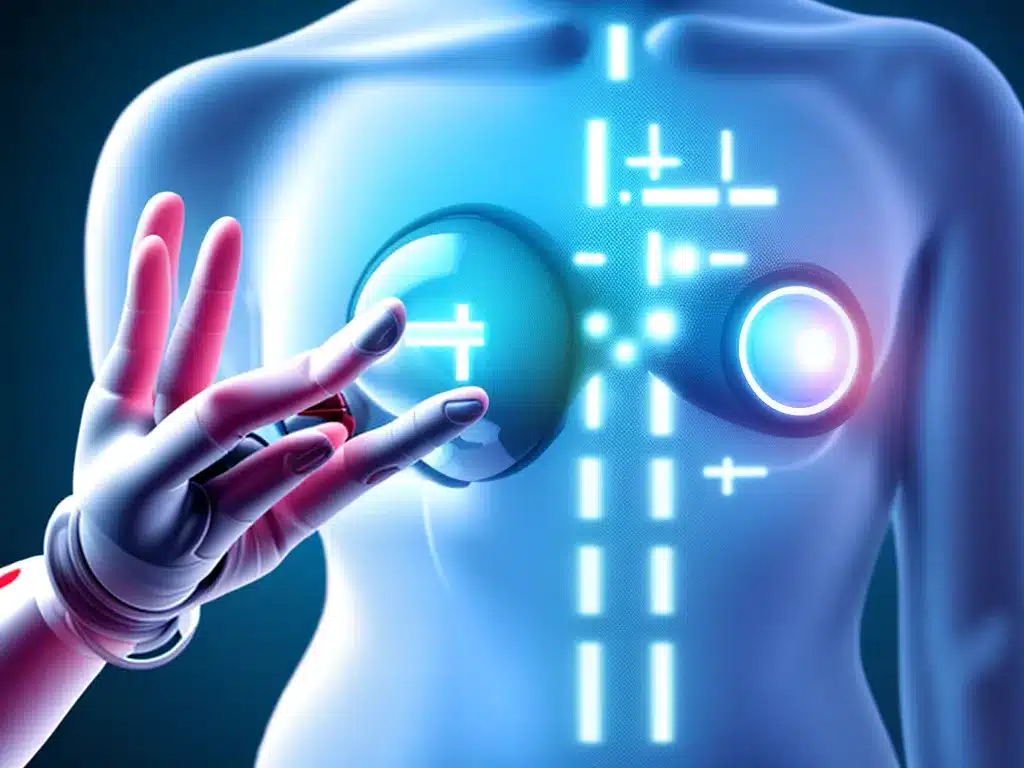Introduction
The year is 2024 and artificial intelligence (AI) has transformed healthcare in unprecedented ways. As a doctor in 2024, I utilize AI every day to improve patient outcomes through enhanced diagnostics and treatments. In this article, I will provide an in-depth look at how AI is shaping the future of medicine.
AI-Assisted Medical Imaging
Medical imaging tools like X-rays, CT scans, and MRI scans provide crucial visual data to help doctors diagnose diseases and conditions. In 2024, these scans are analyzed by AI algorithms to extract insights human doctors may miss. For example:
-
AI radiology assistants analyze scans for early signs of cancer, heart disease, fractures, and hundreds of other pathologies. Their deep learning algorithms can detect anomalies and patterns the human eye may overlook.
-
AI tools automatically segment and label different anatomical structures in scan images. This makes it faster and easier for me to understand complex scans.
-
AI image enhancement clarifies blurry or low resolution scans by intelligently filling in missing data. This helps me better visualize patient anatomy.
As a doctor, I rely heavily on the second opinion of these AI tools. They have proven adept at finding crucial details I could have missed, leading to faster and more accurate diagnoses.
AI-Driven Lab Tests
In 2024, AI algorithms help analyze results from common lab tests like blood tests, urinalysis, biopsies, and more. For example:
-
AI assistants analyze blood samples for biomarkers linked to hundreds of diseases. They can detect Alzheimer’s, cancers, heart disease, infections, and other conditions through subtle changes in blood chemistry.
-
AI cytology tools examine tissue biopsy samples for morphological anomalies indicative of cancer. Their deep learning algorithms are trained on millions of sample images to identify malignant changes.
-
AI urinalysis tools can detect early signs of diabetes, kidney disorders, UTIs, and other conditions through automated examination of chemical and visual properties of urine samples.
These AI tools deliver fast, automated analysis of lab tests. As a doctor, they help me interpret complex results and ensure no clues are missed.
AI-Driven Physical Health Monitoring
In 2024, AI powers the real-time monitoring of patient health through wearable devices and ambient sensors. For example:
-
Smartwatches with AI analyze pulse, oxygen saturation, sleep patterns and more to detect emerging health issues.
-
Smart clothing with embedded AI sensors track respiration, heart activity, posture and movement to identify signs of disease or increased risk.
-
Ambient sensors throughout hospitals track patient mobility levels, speech patterns, and behavioral biomarkers to detect psychiatric conditions, infections, and adverse drug reactions.
-
AI chatbots interact with patients to actively monitor health conditions and watch for signs of deterioration.
This real-time AI monitoring helps me detect emerging health threats early. It also allows me to continuously monitor patients to ensure treatments are working as intended.
AI-Assisted Robotic Surgery
Robotic surgical systems guided by AI algorithms have transformed surgery in 2024. These systems allow me to perform complex operations with enhanced precision, flexibility and control.
-
AI aids visualization by processing live surgery scans and highlighting anatomical structures in an augmented reality view. This helps me avoid damaging critical tissues.
-
Machine learning algorithms control the robotic instruments with superhuman dexterity, motion smoothing and tremor reduction. This allows me to make microscopic incisions and manipulations.
-
AI assistants monitor patient vitals and warn of impending adverse events during long and complex surgeries. This improves patient safety.
-
AI pre-plans optimal surgery routes based on the patient’s unique anatomy. This is customized on the fly by real-time anatomical scans during surgery.
With these AI capabilities, I can perform surgeries through tiny incisions that result in less scarring, pain, and faster recovery for patients.
AI-Driven Medication Management
In 2024, AI systems help me accurately prescribe medications and monitor their effects in patients. This improves drug effectiveness and safety.
-
AI assistants analyze patient records to predict optimal medications and dosages based on biomarkers and genetics. This results in more personalized, precise prescriptions.
-
Automated AI monitoring of patient vital signs, blood tests and behavior detects adverse drug reactions early. This allows me to adjust treatments to avoid harm.
-
AI tracking of medication adherence through smart pill bottles improves compliance. AI bots even remind and encourage patients to take medications on time.
-
AI prediction of drug interactions protects patients taking multiple medications. AI alerts warn me in real time of potentially dangerous interactions.
With AI assistance, I can provide patients with drug regimens tailored to their needs that maximize benefits and minimize risks. This is ushering in an era of precision, personalized medicine.
The Future with AI
The AI tools I use daily have vastly improved my ability to treat and monitor patients. Diseases are caught earlier, treatments are more tailored and effective, surgeries are less invasive, and care is more personalized.
While AI will not fully replace human doctors, it is augmenting our abilities and allowing us to improve the health of patients in ways previously impossible. The medical future with AI assistance is incredibly bright. With further development, I am excited to see how AI will continue to revolutionize healthcare in the coming years and decades.













